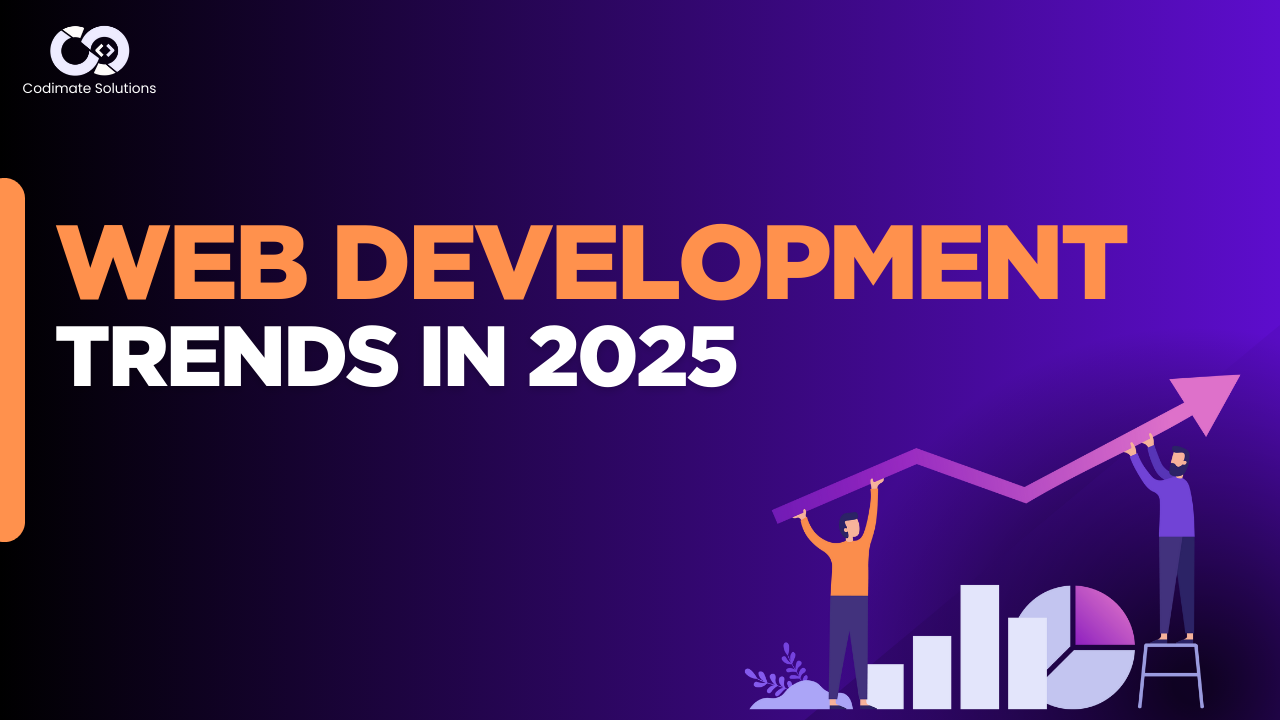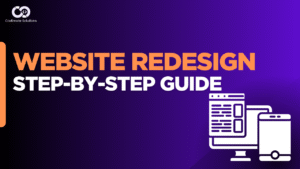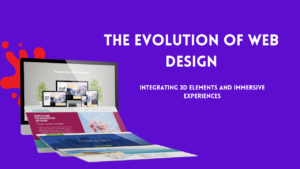The web development landscape is evolving rapidly, driven by advancements in AI, user experience demands, and sustainability concerns. As businesses strive to stay competitive, adopting the latest trends is crucial for delivering innovative, user-centric websites. This article explores the top 15 web development trends in 2025, offering insights into technologies and strategies that will define the future of the web.
Table of Contents
- 1. Progressive Web Apps (PWAs) Dominate
- 2. AI-Powered Web Design and Automation
- 3. Voice Search Optimization
- 4. Immersive 3D Elements and WebGL
- 5. Motion UI and Kinetic Typography
- 6. Sustainable Web Design
- 7. API-First Development
- 8. Jamstack Architecture
- 9. AI-Generated Content Optimization
- 10. WebAssembly for High-Performance Apps
- 11. Enhanced Cybersecurity Measures
- 12. Low-Code and No-Code Platforms
- 13. Micro-Frontends for Scalability
- 14. Augmented Reality (AR) Integration
- 15. Personalization Through Machine Learning
- Comparison Table: Top Web Development Trends in 2025
- FAQ: Web Development Trends in 2025
- Conclusion
1. Progressive Web Apps (PWAs) Dominate
Progressive Web Apps (PWAs) continue to bridge the gap between web and native apps, offering fast, reliable, and engaging experiences. In 2025, PWAs are expected to dominate due to their offline capabilities, push notifications, and app-like interfaces. Businesses are leveraging PWAs to enhance user retention and reduce development costs.
- Why It Matters: PWAs improve performance on low-bandwidth networks and boost mobile engagement.
- Example: Retail brands use PWAs for seamless eCommerce experiences.
- Learn More: Discover how PWAs are transforming the web at Codimate Solutions’ PWA Development Services.
2. AI-Powered Web Design and Automation
Artificial Intelligence (AI) is revolutionizing web design by automating tasks like layout generation, content personalization, and A/B testing. In 2025, AI tools will enable developers to create highly customized websites with minimal manual effort.
- Key Benefit: AI reduces design time and enhances user personalization.
- Use Case: AI-driven chatbots improve customer support on websites.
- Further Reading: Explore AI’s role in design at The Future of Creativity: AI-Powered Design Tools.
3. Voice Search Optimization
With the rise of smart speakers and voice assistants, optimizing websites for voice search is a top priority in 2025. Developers are integrating natural language processing (NLP) to make websites compatible with conversational queries.
- Why It’s Growing: Over 50% of searches are expected to be voice-based by 2025.
- Tip: Use long-tail keywords and structured data for better voice search rankings.
- Resource: Learn about AI-driven search enhancements at The Role of AI in Search Algorithms.
4. Immersive 3D Elements and WebGL
Web design is becoming more immersive with the integration of 3D elements powered by WebGL. In 2025, websites will feature interactive 3D visuals, virtual tours, and gamified experiences to captivate users.
- Impact: 3D elements increase dwell time and engagement.
- Example: Real estate websites use 3D virtual tours to showcase properties.
- Dive Deeper: Read about 3D web design at The Evolution of Web Design.
5. Motion UI and Kinetic Typography
Dynamic animations and kinetic typography are enhancing user engagement by adding visual flair to websites. In 2025, Motion UI will be used to guide user attention and create memorable interactions.
- Benefit: Animations improve user navigation and storytelling.
- Trend Insight: Kinetic typography is popular for landing pages and video content.
- More Info: Check out The Rise of Kinetic Typography.
6. Sustainable Web Design
Sustainability is a growing focus in web development. In 2025, developers are optimizing websites to reduce digital carbon footprints by minimizing server requests, compressing images, and using green hosting providers.
- Why It Matters: Eco-conscious consumers prefer sustainable brands.
- Actionable Tip: Use lazy loading to improve energy efficiency.
- Learn More: Explore sustainable practices at Sustainability in Web Design.
7. API-First Development
API-first development is gaining traction as businesses prioritize seamless integrations across platforms. In 2025, developers will design APIs before building front-end interfaces to ensure scalability and flexibility.
- Key Advantage: Simplifies integration with third-party services.
- Use Case: eCommerce platforms use APIs for payment gateways and inventory management.
- Partner with Experts: Discover API solutions at Codimate Solutions’ Services.
8. Jamstack Architecture
Jamstack (JavaScript, APIs, and Markup) is redefining web development by decoupling front-end and back-end systems. In 2025, Jamstack will be favored for its speed, security, and scalability.
- Why It’s Popular: Static sites load faster and are less vulnerable to attacks.
- Example: Blogs and portfolios benefit from Jamstack’s simplicity.
- Get Started: Learn web development basics at A Comprehensive Guide to Web Development.
9. AI-Generated Content Optimization
AI is transforming content creation by generating high-quality, SEO-optimized text, images, and videos. In 2025, developers will integrate AI tools to ensure content uniqueness and relevance.
- Benefit: AI reduces content creation time while maintaining quality.
- Best Practice: Combine AI-generated content with human editing for authenticity.
- Read More: See how AI enhances SEO at Harnessing AI-Generated Content for SEO.
10. WebAssembly for High-Performance Apps
WebAssembly (Wasm) enables developers to run high-performance applications in browsers. In 2025, Wasm will power complex web apps, such as games and video editors, with near-native performance.
- Why It’s Trending: Wasm supports languages like C++ and Rust for web development.
- Example: Video editing tools use Wasm for real-time processing.
- Expert Support: Build high-performance apps with Codimate Solutions.
11. Enhanced Cybersecurity Measures
With cyber threats on the rise, web developers are prioritizing security in 2025. Features like HTTPS, secure APIs, and CAPTCHA enhancements will protect user data and build trust.
- Key Focus: Preventing bot attacks and data breaches.
- Trend Insight: AI-powered CAPTCHAs improve bot detection.
- Learn More: Dive into CAPTCHA advancements at Can Bots Solve CAPTCHAs?.
12. Low-Code and No-Code Platforms
Low-code and no-code platforms are democratizing web development, allowing non-technical users to build websites. In 2025, these platforms will integrate AI and advanced templates for professional results.
- Why It’s Growing: Speeds up development for startups and small businesses.
- Example: WordPress remains a leader in no-code solutions.
- Explore Services: Check out WordPress Website Development.
13. Micro-Frontends for Scalability
Micro-frontends break down monolithic front-end codebases into smaller, independent components. In 2025, this approach will enhance team collaboration and website scalability.
- Benefit: Allows teams to work on different sections simultaneously.
- Use Case: Large-scale eCommerce platforms adopt micro-frontends.
- Contact Experts: Learn more at Codimate Solutions’ Contact Page.
14. Augmented Reality (AR) Integration
AR is transforming web experiences by enabling interactive features like virtual try-ons and product visualizations. In 2025, AR will be seamlessly integrated into eCommerce and educational websites.
- Impact: AR boosts conversion rates by 40% in eCommerce.
- Example: Fashion brands use AR for virtual fitting rooms.
- Why Choose Us: Partner with Codimate Solutions for cutting-edge solutions.
15. Personalization Through Machine Learning
Machine learning (ML) is enabling hyper-personalized web experiences by analyzing user behavior. In 2025, websites will dynamically adapt content, layouts, and recommendations to individual preferences.
- Why It’s Essential: Personalized experiences increase user satisfaction.
- Trend Insight: ML-driven recommendation engines power eCommerce sales.
- Further Reading: Explore ML’s impact at AI and Machine Learning in SEO.
Comparison Table: Top Web Development Trends in 2025
| Trend | Key Benefit | Use Case | Adoption Rate |
|---|---|---|---|
| Progressive Web Apps | Offline access, app-like experience | eCommerce, media | High |
| AI-Powered Design | Automation, personalization | Marketing, customer support | Very High |
| Voice Search Optimization | Conversational search compatibility | Blogs, local businesses | Moderate |
| 3D Elements & WebGL | Immersive visuals | Real estate, gaming | Moderate |
| Sustainable Web Design | Reduced carbon footprint | All industries | Growing |
FAQ: Web Development Trends in 2025
What is the most important web development trend in 2025?
AI-powered design and automation are critical, as they streamline development and enhance personalization, improving user engagement and efficiency.
How do PWAs benefit businesses?
PWAs offer fast loading, offline access, and app-like experiences, reducing development costs and boosting user retention for businesses.
How does WebAssembly improve web performance?
WebAssembly enables near-native performance for complex applications, making it ideal for games, editors, and data-intensive web apps.
Conclusion
The web development trends of 2025 reflect a shift toward smarter, user-centric, and sustainable solutions. From AI-driven automation to immersive 3D experiences and eco-friendly practices, these trends are shaping the future of the web. Businesses that adopt these innovations will stay ahead in delivering exceptional digital experiences. For expert guidance, partner with Codimate Solutions to bring your vision to life.




